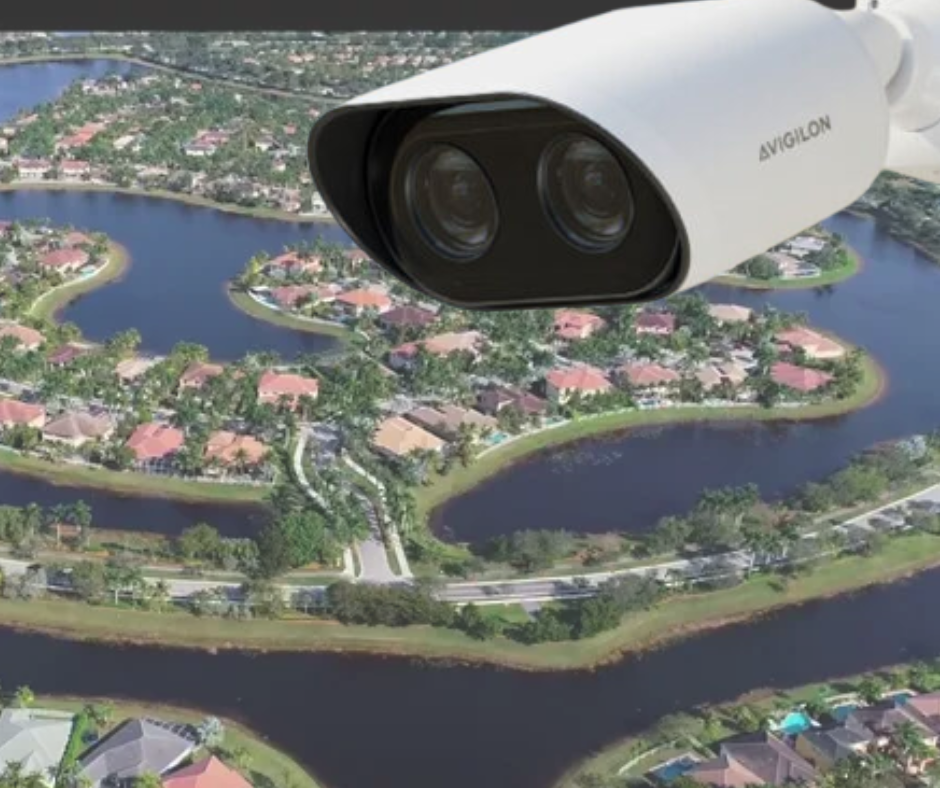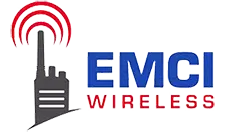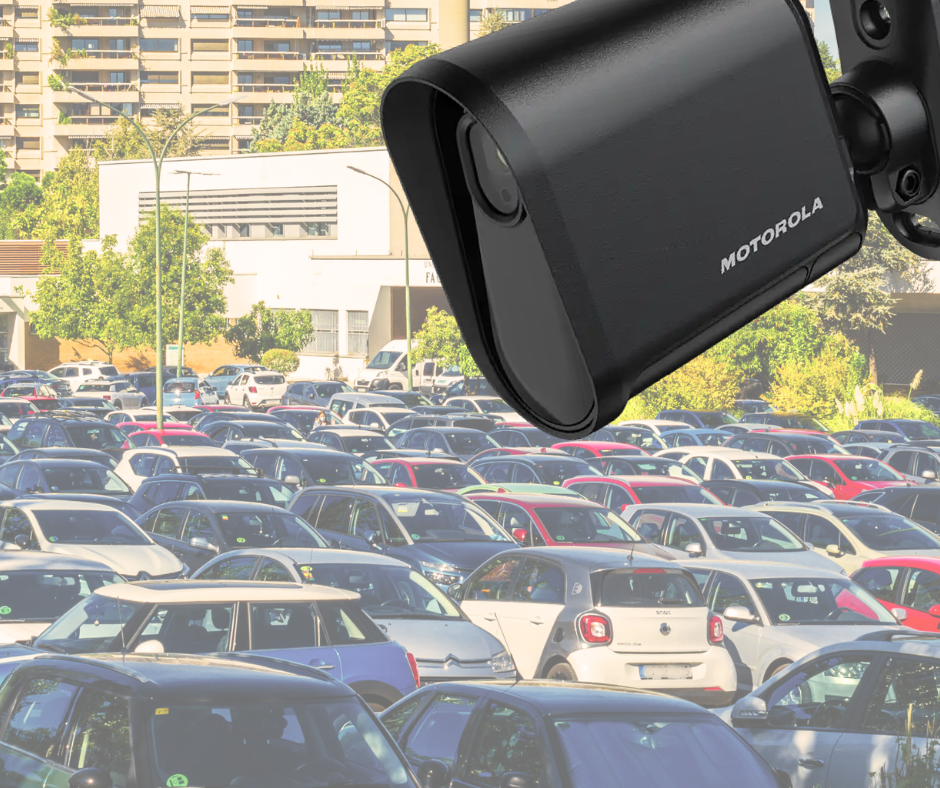License Plate Recognition (LPR) technology uses cameras and software to read license plates and match them to a database. Most people think of LPR as something used only by police to catch speeders or find stolen cars. But it’s doing a lot more than that these days. From keeping apartment complexes secure to managing traffic at warehouses, LPR is now a smart tool for many businesses and private communities.
Commercial license plate recognition specifically helps track who’s coming and going, improves safety, and even saves time. In this article, we’ll take a closer look at where LPR is being used outside of law enforcement and why more private groups are choosing it to stay organized, secure, and in control.
What Is Commercial License Plate Recognition?
If you haven’t read any of our other articles about license plate recognition and the concept is new to you, let’s help you get the lay of the land. License Plate Recognition (LPR) is a type of surveillance technology that captures images of vehicle license plates using high-resolution cameras.
The captured images are analyzed using optical character recognition (OCR) software that identifies and translates the letters and numbers on each license plate. Once the plate is recognized, the system checks it against a database to decide what action to take, whether it’s granting access, logging the visit, or sending out an alert.
What makes commercial license plate recognition different from traditional law enforcement use? Businesses and private properties use LPR to meet different goals, such as:
- Security: Track who enters and exits the property, and flag unknown or suspicious vehicles.
- Access control: Open gates automatically for approved vehicles without using keycards or fobs.
- Operational efficiency: Speed up entry times, reduce staff workloads, and keep detailed vehicle records for reporting or analysis.
Common features used in commercial systems include:
- Real-time alerts for unauthorized vehicles
- Automatic logging of every vehicle entry and exit
- Whitelists and blacklists for approved or blocked vehicles
- Integration with existing systems like gate controllers, employee databases, or visitor management tools
Key Use Cases for LPR Beyond Law Enforcement
License Plate Recognition (LPR) has proven to be a powerful tool for public safety. One leading manufacturer estimates that their cameras help solve over 700,000 crimes each year. That’s a huge impact.
But what many people don’t realize is that these same cameras can be used ethically and responsibly in non-police settings. Businesses, property managers, and community leaders are now turning to commercial license plate recognition to improve safety, streamline operations, and manage access with less hassle.
Here’s a closer look at how LPR is being used across different industries.
Private Campuses and Corporate Facilities
Large corporate campuses and industrial sites often deal with a constant flow of vehicles—from employees and vendors to delivery trucks and service crews. LPR helps secure the property by tracking who’s coming in and when. Instead of relying on manual check-ins or gate attendants, businesses can tie license plates directly to employee databases, making entry fast and reliable.
Beyond just opening gates, commercial license plate recognition can help log how long contractors or fleet vehicles are on-site, improving billing accuracy or compliance checks. Hospitals, tech campuses, and manufacturing plants are all good examples of places that benefit from this type of automation.
Here are some configuration tips.
- Set up whitelists for employees, vendors, and approved service vehicles
- Use real-time alerts when unknown or blacklisted plates attempt to enter
- Automate gates to open only for verified plates, reducing manual effort
Apartment Complexes and Gated Communities
For residential properties, keeping the wrong vehicles out is just as important as letting the right ones in. LPR makes it easier to track residents’ vehicles and flag unknown ones. It also speeds up access at gates, helping prevent traffic backups or long wait times.
With LPR, every car that enters is logged, creating a full access history that property managers can use when responding to tenant concerns. Whether it’s a luxury condo, multifamily development, or student housing, commercial license plate recognition adds a layer of security and convenience.
Here are some helpful tips for configuring and leveraging LPR:
- Offer mobile app-based guest access so residents can pre-approve visitors
- Notify residents automatically when their guests arrive
- Set up alerts for repeat visits from unauthorized or unknown vehicles
Logistics and Transportation Depots
Warehouses and logistics depots see a steady stream of commercial trucks, often on tight delivery schedules. LPR helps reduce delays by quickly identifying authorized trucks as they arrive. By matching license plate data with delivery schedules or carrier info, staff can skip manual logs and focus on keeping freight moving.
A commercial license plate recognition system also logs entry and exit times automatically, which is useful for tracking detention time and optimizing workflows. That kind of visibility can help improve relationships with carriers and reduce bottlenecks during peak times.
Consider these configuration tips.
- Integrate LPR with Transportation Management Systems (TMS) for live updates
- Trigger alerts for late arrivals, unscheduled vehicles, or duplicate entries
- Set up automated gate access for regular carriers to speed up check-ins

HOA-Controlled Neighborhoods
Homeowners Associations (HOAs) often need a better way to monitor traffic and address concerns about unfamiliar vehicles in the area. LPR lets them do that without putting up extra fences or hiring overnight patrols. Neighborhoods can log all entries and review past vehicle activity if a complaint is made.
Over time, this data can also help HOAs understand traffic trends, like which vendors visit most often or when unauthorized vehicles show up. From quiet retirement communities to larger suburban developments, commercial license plate recognition gives HOAs more oversight without micromanaging residents.
Here are some recommended tips for configuration.
- Notify board members or security teams when flagged vehicles are spotted
- Allow scheduled access for landscapers, pool cleaners, and other vendors
- Use reporting tools to review vehicle activity during off-hours or overnight
Security and Operational Benefits
Implementing commercial license plate recognition delivers real, measurable advantages for businesses and communities:
- Reduced manual monitoring and staffing needs: LPR systems handle continuous vehicle scanning without human oversight. That means fewer guards or staff needed at entry points and improved efficiency compared to manual checks.
- Faster response to threats with real-time data: Instant alerts flag unauthorized, blacklisted, or suspicious vehicles the moment they arrive. Security teams can act immediately, reducing response times and potential risk.
- Robust reporting and audit capability: Every scan is logged with plate number, date, time, and location, creating a reliable audit trail. This helps in investigations, parking enforcement, billing reconciliation, or simply generating useful usage reports.
- Stronger security reputation backed by technology: Using LPR shows your organization is proactive about safety. It boosts confidence among tenants, employees, and visitors by signaling a secure, modern environment.
Overall, commercial license plate recognition delivers smarter security, simplified operations, and stronger trust.
Choosing the Right System for Your Property
Not all LPR systems are created equal. Picking the wrong one can lead to wasted time, money, and frustration. Whether you’re managing a large corporate campus or a gated community, the right commercial license plate recognition system should fit your property’s layout, traffic volume, and security goals. A few smart decisions upfront can make all the difference in long-term performance and satisfaction.
Here are some key factors to consider:
- Camera resolution: High-resolution cameras improve accuracy, especially in low light or fast-moving traffic.
- Software compatibility: Your LPR system should integrate smoothly with your existing security tools, gate controls, or databases.
- Storage type: Decide between cloud-based storage for remote access and updates or on-premises storage for more control and privacy.
- User access levels: Choose a system that allows tiered access for staff, management, or third-party vendors to avoid confusion and maintain security.
Equally important is choosing a vendor who understands the needs of commercial clients. LPR installations aren’t one-size-fits-all, and a knowledgeable partner can help tailor the system to your space, traffic flow, and reporting needs.
That’s where EMCI Wireless stands out from other providers. With years of experience designing and installing custom LPR solutions for everything from logistics hubs to private neighborhoods, we offer the technical expertise and hands-on service you need to get it right the first time. Our team will help you evaluate your needs, recommend the best tools, and support you long after installation is complete.
LPR Is No Longer Just for Law Enforcement
As more private-sector organizations realize the benefits of LPR, its use is quickly expanding beyond police departments. From gated neighborhoods and apartment complexes to corporate campuses and logistics depots, commercial license plate recognition offers a wise, flexible way to improve access control, security, and daily operations. It’s not just about who gets in. It’s about what you can do with that data afterward.
The return on investment is clear: fewer staffing needs, faster response times, and better visibility into what’s happening on your property. At EMCI Wireless, we help clients across industries assess their needs and implement custom solutions that work. Our LPR systems combine Avigilon and Motorola technologies to provide alerts in real-time, deep analytics, and flawless integration with your existing infrastructure.
Ready to take the next step? Contact EMCI Wireless today to learn how commercial LPR can support your property’s goals.

